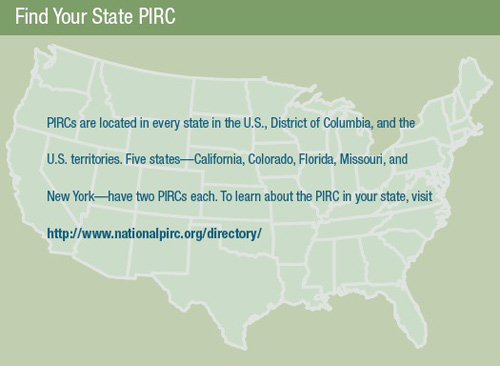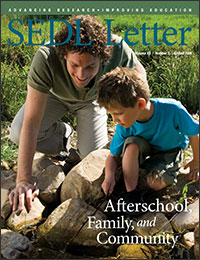USDE's Parental Information and Resource Center (PIRC) Program Works to Boost Parent Involvement and Achievement

Effectively engaging parents and families in the education of their children has the potential to bring about school change and improvement in ways that other reform strategies cannot. And that belief is at the heart of the Parental Information and Resource Center (PIRC) program sponsored by the U.S. Department of Education (USDE).
The PIRC program, first funded in 1995, now ensures that each state has at least one PIRC and that the PIRCs each play a statewide role in coordinating and fostering successful and effective parental involvement policies, programs, and activities to improve student academic achievement and strengthen partnerships between parents, schools, and communities. Seven outcomes have been identified for the PIRC program: improved home-school communication, increased student achievement, increased school academic achievement, increased parent involvement in school planning, increased parent involvement in school review, increased parent involvement in school improvement, and increased school readiness.

Click the map above to be taken to the map of the National Parental and Information Resource Centers.
The PIRC program had an initial goal of getting parents involved in their children’s early education—from birth to age 5. Ten years later, some states had one PIRC, 18 states and the District of Columbia had multiple centers, and 10 states had none. The PIRCs offered widely different services. However, with the No Child Left Behind (NCLB) Act came the need for parents to get more information about school choice, supplemental services, and other accountability issues. Beginning with the 2006-11 grant cycle, the USDE saw the need to create a more cohesive system of PIRCs and wanted to ensure that all PIRCs had sound information to provide to parents, especially about parent rights, supplemental services, and parent choice. Thus the plan for a National PIRC Coordination Center was born. In 2006, SEDL, the Harvard Family Research Project (HFRP), and the Miko Group partnered to serve as the Coordination Center, bringing to the PIRC program a strong research and evaluation focus as well as many years’ experience in family involvement and professional development.
The first step in the Coordination Center’s technical assistance was to help the PIRCs become more strategic in their evaluation efforts, in meeting legislative requirements, and in showing the impact of their programs. The Center has used regional institutes to provide assistance and foster collaborative learning among the PIRC directors and evaluators.

Much of the Coordination Center’s early work was to orient new PIRCs. Many of the PIRCs that received funding for the 2006-11 grant cycle were new to the federal PIRC program—in fact almost half of the 60 PIRCs operating the first year of that cycle were new. New to the program or previous grantees, it hasn’t mattered, said Lacy Wood, SEDL project director for the Coordination Center. “All of the PIRCs have been committed to continuous learning and improvement to advance their programs, services, and evaluations. They also began to form partnerships that would help them expand their role as statewide leaders and resource providers in parent involvement.”
Now that most of the PIRCs have been operating nearly 2 years under the new grant cycle, the program is embarking on what Wood refers to as a “new era.” The PIRCs are all strategically working to become statewide leaders and technical assistance centers, leveraging and building on existing family involvement efforts in their states or territories.
Sue Ferguson, director of the National Coalition for Parent Involvement Education, who works closely with the PIRCs has noticed that change. “The PIRCs are all about relationships. Each of them is different because their states are different, but I see them being more consistent across states.” Ferguson feels now that the PIRCs are “here to stay” and “growing in strength.”
Overseeing the entire PIRC program is Patricia Kilby-Robb, a veteran of several federal education programs and school reform initiatives and a former education research consultant and principal. As national PIRC expert and contract officer’s representative for the Coordination Center, Kilby-Robb emphasizes the importance of the need for high-quality PIRC products and services and, most important, rigorous evaluation to guide the PIRCs’ work.
She said, “We want to have a sound body of evidence at the end of 5 years that will address the benefits and outcomes of the PIRC program, while encouraging all PIRCs to use evaluation in an ongoing way that continuously informs and improves their work.”
The Role of the National PIRC Coordination Center
The Coordination Center plays a central role to- Guide PIRCs through all stages of the evaluation process and help them to internalize and institutionalize the process
- Assist PIRCs in the reporting and use of their data
- Synthesize learning across the PIRCs
- Support PIRC management capacity and service delivery
- Provide access to research-based materials and effective practices
PIRCs Distribute Information
A recent evaluation of the PIRC program has shown that more than 1 million parents nationwide have received PIRC newsletters; 2 million parents have received training materials, and 13 million people were reached through mass media efforts just during the first year of the grant cycle.
PIRC Priorities
USDE has established the following four priorities for PIRC program implementation:
- Early childhood parent education – Spend at least 30 percent of funds each year to establish, expand or operate Parents as Teachers programs, Home Instruction for Preschool Youngsters programs, or other early childhood parent education programs.
- Statewide impact – Use broad statewide strategies to provide parents across the state, particularly parents who are educationally or economically disadvantaged with services that enhance their ability to participate effectively in their child’s education, including their ability to communicate effectively with public school personnel in the school that their child attends.
- Understanding state and local report cards, public school choice, and supplemental educational services – Provide activities that effectively assist parents in understanding state and local report cards under Title I of the Elementary and Secondary Education Act (ESEA) and, in cases where their child attends a school identified as in need of improvement, corrective action, or restructuring under Title I, in understanding their options for public school choice or supplemental educational services.
- Technical assistance in the implementation of local educational agency (LEA) and school parental involvement policies under Section 1118 of the ESEA – Offer technical assistance to support LEA and school parental involvement policies under Title I of the ESEA in order to improve academic achievement and school performance.
She also noted that the experience of SEDL and the Harvard Family Research Project in research and evaluation are assets to the PIRC program. Already, the technical assistance provided by the National PIRC Coordination Center with emphasis on best practices and evaluation has made a difference in the PIRC program. Twenty-seven of the PIRCs now have in place evaluation processes that are experimental or quasi-experimental in nature. Most of these 27 are focusing on both student-level and parent-level outcomes. Some of the specific evaluations focus on child development outcomes such as early literacy, parent knowledge and skills that support student learning, parent and child attitudes and perceptions toward school, and parent involvement that supports student learning.
Ann Henderson, a senior consultant with the Annenburg Institute for School Reform—who has devoted much of her career in education policy to family involvement issues—says this type of evaluation needed from the PIRCs. “We need more good data on engaging parents and improving student achievement. People don’t seem to collect it so much nor over the longer term—there just hasn’t been the funding for it,” she said.
Henderson has worked with a number of PIRCs including ones in Washington, D.C., Indiana, Pennsylvania, and Virginia and she has worked in combination with the state departments and PIRCs in Wisconsin and West Virginia. She said, “Regarding the PIRCs that I’ve worked with recently, I’ve found a strong determination not just to carry out a respectable program, but have a strong impact, and I see real interest in developing parent leadership which is extremely important investment to make.”
Henderson noted that developing parent leadership involves more than just telling parents how to help kids at home, but includes skills that help parents become advocates for their kids at school and help other parents get involved. These parent leadership skills enable parents to recognize good work and learning for their child’s grade level and help them create a situation of accountability at the school, she said.
Kilby-Robb agrees. “I get excited all the time because I see the changes being made,” she said. “I’ve seen parents in both rural and urban areas becoming more aware of what their rights are and what their opportunities are. Before, they may have been PIRC Priorities involved in their children’s schools, gone to PTA meetings and back-to-school night. Now parents are becoming more knowledgeable about the law [NCLB] and how it relates to them.”
Kilby-Robb is also pleased with progress made reaching out to all parents—no matter what socioeconomic background or language they speak. Many of the PIRCs provide training materials in multiple languages, including Spanish, Haitian, and Hmong. Others have worked to communicate with hard-to-reach parents by using public service announcements, radio talk shows, and segments on television. Others have hired bilingual staff members and provided translators at school meetings. Another PIRC has used AT&T language to identify and translate languages other than English over the phone.
Key to this diversity of offerings is each PIRC’s advisory board. “The PIRC boards have become essential for looking at state issues around parent involvement,” said Kilby-Robb. “They try to find solutions to meet the needs of parents within the state and are helping to make sure the PIRCs are positioning themselves to coordinate federal, state, and local parent involvement activities.”
The high-quality technical assistance with regard to best practices and evaluation provided by the National PIRC Coordination Center is not only helping the PIRCs reach new levels of progress, but strengthening the parent involvement field as well. “SEDL and the Harvard Family Research Project will have a tremendous impact on parental involvement work for years to come,” said Kilby-Robb.
Next Article: Austin's Maplewood Elementary Relies on Parents as Partners for Afterschool

